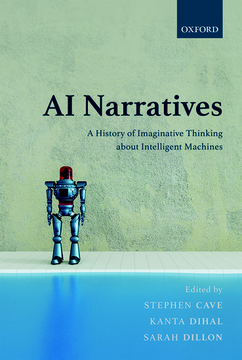Who builds artificial intelligence? Is it engineers and computer scientists, or writers, filmmakers, and artists? Researchers who investigate the narratives of AI show that storytellers have as much influence on technology as tech-makers do, and that stories have been shaping the future for centuries.
In the newly released AI Narratives: A history of imaginative thinking about intelligent machines from Oxford University Press, Stephen Cave, Kanta Dihal, and Sarah Dillon have brought together leading work from across disciplines that explores the powerful influence human stories about intelligent machines have had, and continue to have, on the evolving AI landscape.
I spoke with Dr. Kanta Dihal, co-editor and lead of the Global AI Narratives project at Leverhulme CFI, about how stories shape our technological future, what she has found most surprising along the way, and the most important lessons we should take away from the research on AI Narratives.
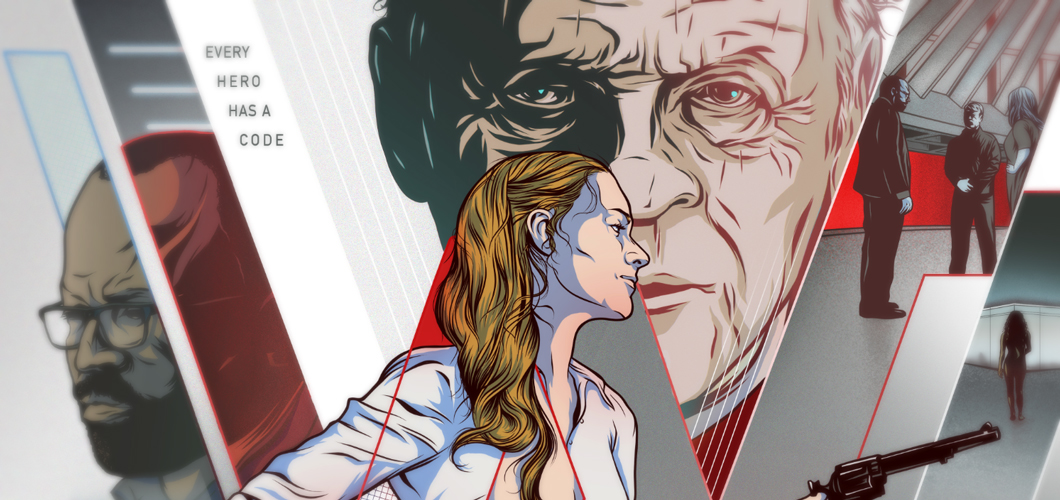
"Westworld" by Berkay Daglar. Licensed under CC BY-NC-ND 4.0
Dorian Peters: Why do the stories we tell about AI matter?
Kanta Dihal: The stories can’t be separated from the technology itself. Every robot or AI system embeds a particular vision of what the future should be like. It therefore both reflects and perpetuates certain stories.
Similarly, the way people react to these machines is determined by their expectations, which are also shaped by cultural narratives. This applies just as much to regulators, funders, etc, who then shape which technologies are developed.
This is true of any technology, but we can see from the success of film and TV franchises like The Matrix and Westworld that AI inspires particularly melodramatic stories! It is important that we understand why, and how they relate to the ways in which the technology itself is being developed and deployed.
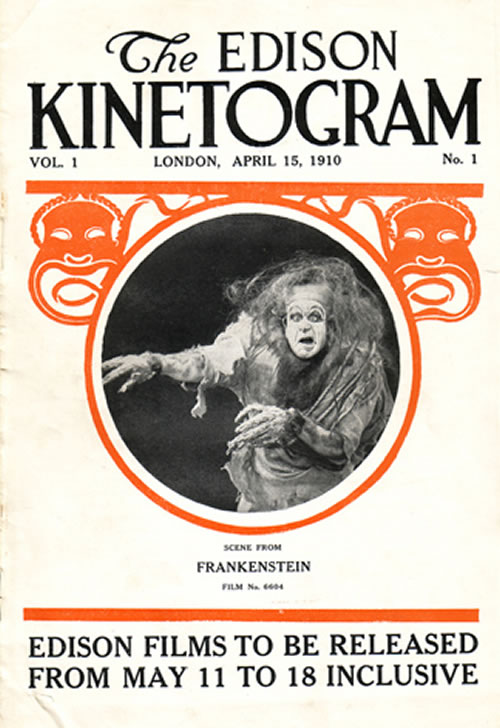
Source: Wikimedia. Public Domain.
DP: Would you say writers, filmmakers, and artists have as much influence on our AI future as scientists and engineers?
KD: Perhaps even more! Narratives can make or break a science: palaeontology got massive boosts in funding after Jurassic Park, while Frankenstein was deployed to constrain the use of GMOs in food – with huge impact in Europe. The most influential storytellers are able to communicate their vision of the future to millions of people.
Of course, in doing so, they are often drawing on themes with deep roots – like anxieties about machines putting humans out of work, or rising up against us. Films like The Terminator or Ex Machina might have brought the killer robot trope to new generations, but they didn’t invent it. In the book, our contributors explore both the contemporary themes and the long history of these stories, going back through the Enlightenment and Middle Ages to Ancient Greece.

"Ex Machina Social" by Watson Design Group. Licensed under CC BY-NC 4.0
DP: When you were bringing the important work in this book together, was there anything that surprised you?
KD: I was astonished to see how scholars from so many different disciplines wanted to contribute to this project. Perhaps I shouldn’t have been surprised – the book grew out of a series of workshops we ran with the Royal Society, and they also engaged people from across the natural and social sciences, engineering, and the humanities, as well as across industry, government and media.
It wasn’t as hard as we thought to convince people that stories matter! In the book, we have contributors from anthropology, history, classics, digital humanities, and philosophy, as well as narrative scholars specialising in everything from Renaissance literature to contemporary science fiction. It shows how important interdisciplinary research is: this is not a field that scholars or scientists from any single discipline can address by themselves.
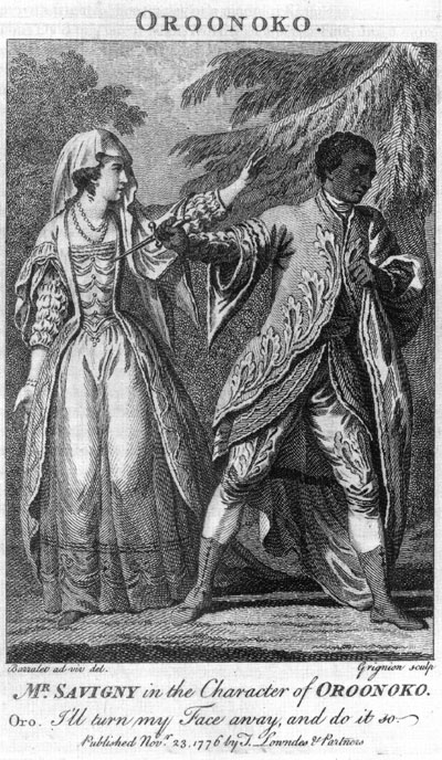
Illustration of a 1776 theatrical production of Oroonoko - Royal Slave. Source: Public Domain - Wikimedia
DP: Was there anything that particularly inspired you?
KD: My own chapter in this book is about narratives in which intelligent machines are treated as slaves, and rise up against their human masters. In it, I was able to draw on my long-standing interest in postcolonial literature, including slave narratives such as Uncle Tom’s Cabin or Oroonoko, and science fiction.
Using AI has allowed science fiction authors to explore the master-slave relationship and the legacies of real world exploration in a new way, by setting their stories in the future rather than specific historical moments. Such stories explore two important themes in particular: first of all, that an increase in technological prowess does not automatically lead to equality and wealth for all. Secondly, that we should think carefully about how our relationship to humanlike intelligent machines might replicate – and so even promote – patterns of dominance and subjugation from which we are trying to escape.
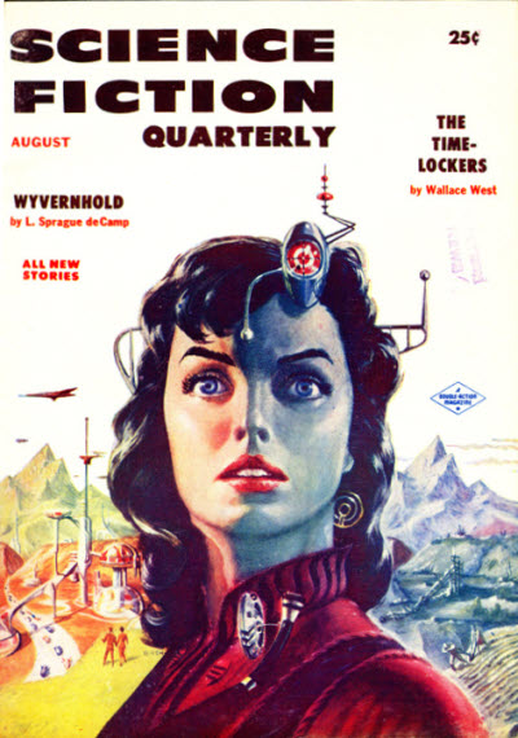
Source: Wikimedia. Public Domain.
DP: What are three of the big insights readers will take away from this book?
KD:
- The history of imagining intelligent machines is vast and ancient, and has been shaping our hopes and fears for thousands of years. This is something we need to bear in mind when considering our current expectations for AI.
- These stories are insightful and nuanced resources. These stories – in particular the science fiction of the last hundred years or so – often deal with the issues raised by intelligent machines in ways that are extremely thoughtful, with much more nuance than can be found in current debates in other sectors such as policy or the mainstream press. It is worth looking beyond The Terminator to a huge resource of fascinating and thought-provoking works that will help us to explore what we want from AI.
- The dominant tropes are misleading. The dominant ways of depicting intelligent machines in the media rely on a very small set of images and film references, which are often misleading. On the one hand, they tend to be extreme – either wildly utopian or completely apocalyptic. But also, they tend to reflect the hopes and fears of one demographic: White, Western men. In this book, however, we show that there are alternatives to these mainstream narratives; that there are works that are subtle, questioning, and that reflect a diverse range of perspectives.
